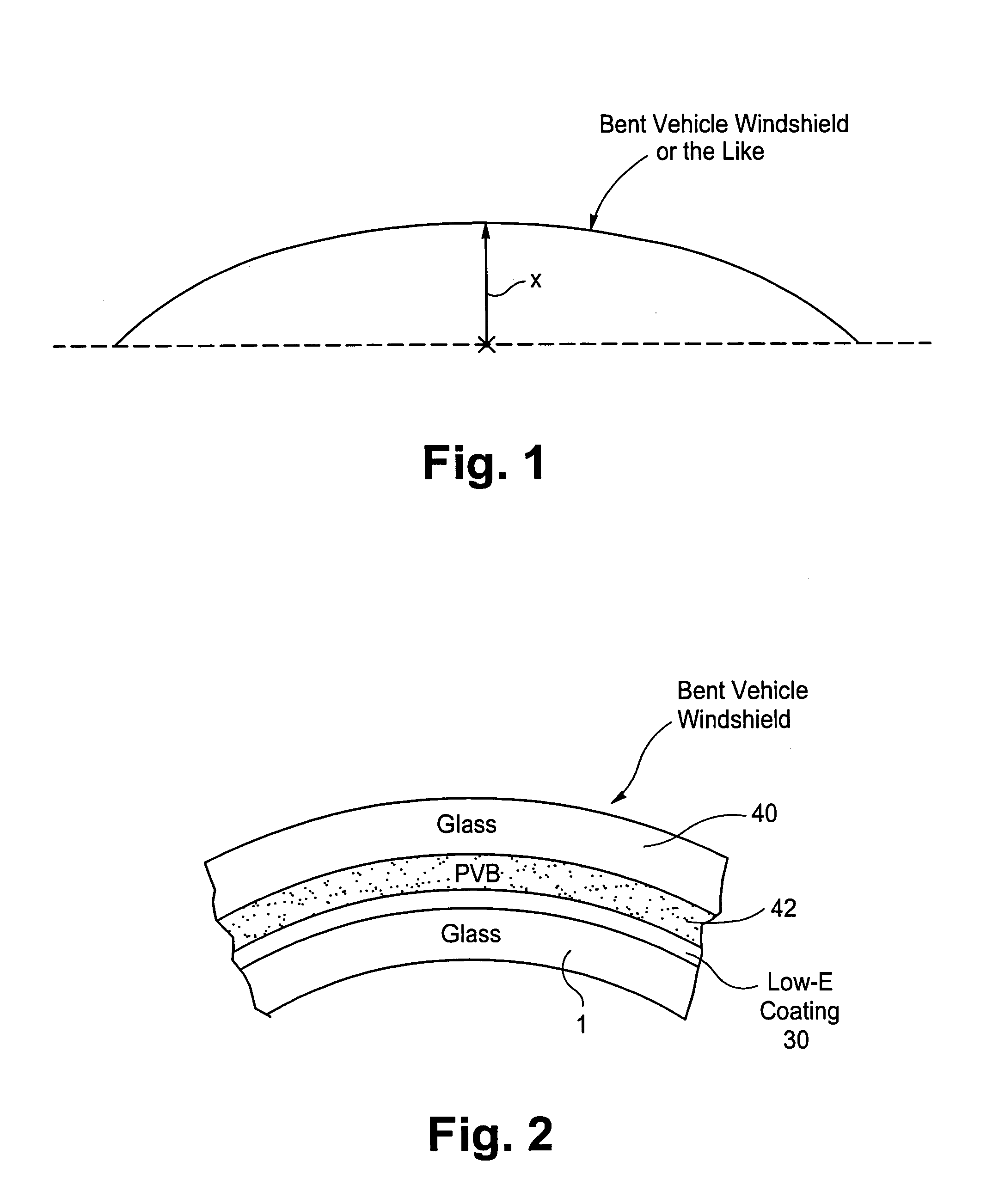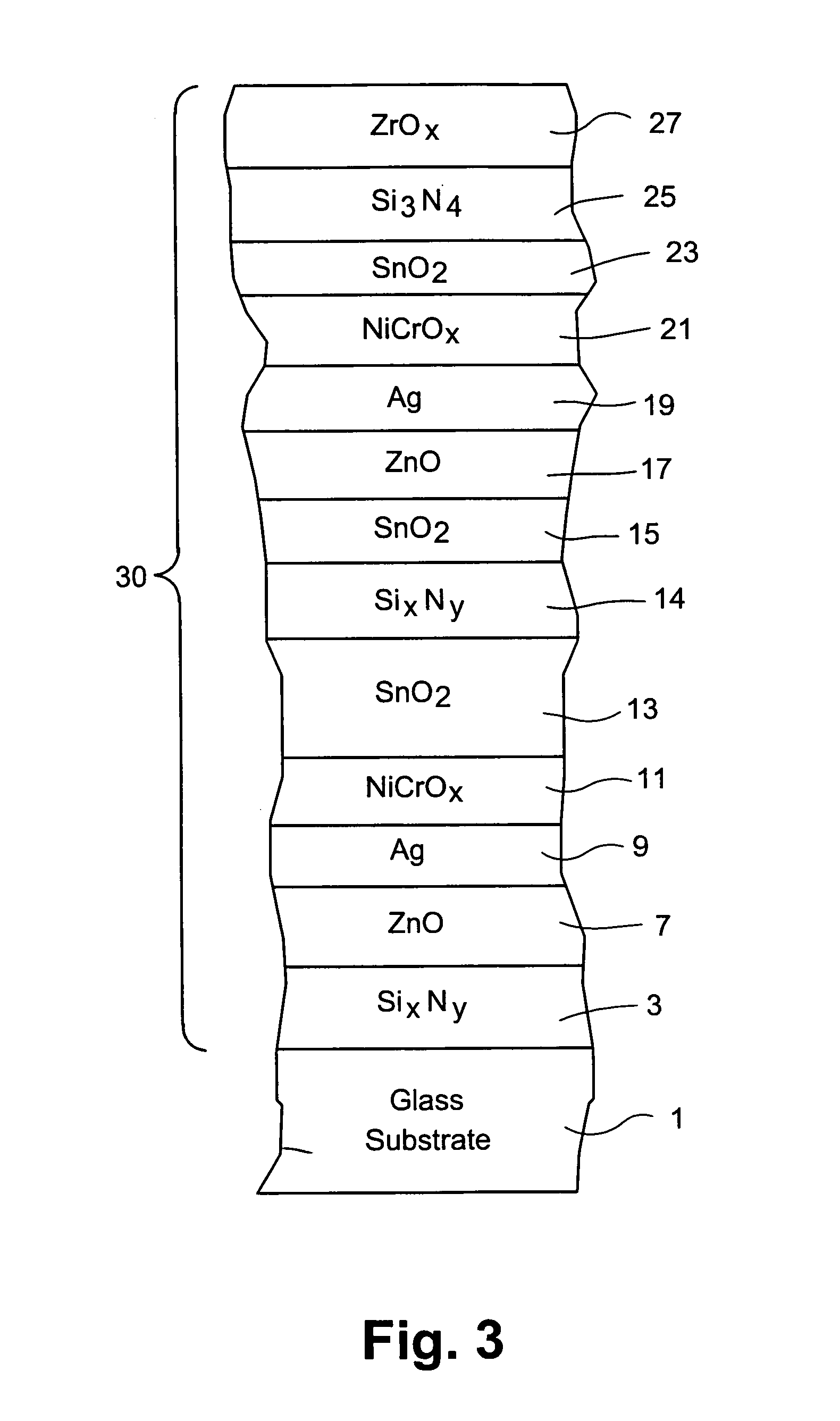Coated article with low-E coating including tin oxide interlayer for high bend applications
a technology of tin oxide interlayer and coating article, which is applied in the direction of coating, natural mineral layered product, coating, etc., can solve the problems of cracking of the coating, affecting and affecting the mechanical durability of the coating, so as to improve the bendability of the coating article, reduce the damage of the coating, and improve the mechanical durability
- Summary
- Abstract
- Description
- Claims
- Application Information
AI Technical Summary
Benefits of technology
Problems solved by technology
Method used
Image
Examples
example 1
Laminated, Post-HT
[0079]
CharacteristicExample 1Tvis (or TY)(Ill. C 2°):78.6%a*t (Ill. C 2°):−3.17b*t (Ill. C 2°):4.25RfY (Ill. C, 2 deg.):9.09%a*f (Ill. C, 2°):−1.10b*f (Ill. C, 2°):−9.38L* (Ill. C 2°):36.15RgY (Ill. C, 2 deg.):9.25%a*g (Ill. C, 2°):1.52b*g (Ill. C, 2°):−11.42L* (Ill. C 2°):36.47Rs (ohms / square):2.0Haze (average):n / a
[0080]Moreover, heat bending of coated articles with the structure of Example 1 to a centerline convex value “x” of 30 mm did not result in any significant mottling damage. For purposes of comparison, a similar coated article except without a tin oxide layer 15 suffered fatal mottling damage once the bending reached a centerline convex value “x” of about 22–23 mm. Thus, is can be seen that the provision of the tin oxide layer 15 unexpectedly and significantly improves the bendability of the coated article.
[0081]Example 2 had the same layer stack as Example 1, except that it was heat treated and heat bent at a windshield manufacturing facility. The data b...
PUM
| Property | Measurement | Unit |
|---|---|---|
| index of refraction “ | aaaaa | aaaaa |
| index of refraction “ | aaaaa | aaaaa |
| index of refraction “ | aaaaa | aaaaa |
Abstract
Description
Claims
Application Information
 Login to View More
Login to View More - R&D
- Intellectual Property
- Life Sciences
- Materials
- Tech Scout
- Unparalleled Data Quality
- Higher Quality Content
- 60% Fewer Hallucinations
Browse by: Latest US Patents, China's latest patents, Technical Efficacy Thesaurus, Application Domain, Technology Topic, Popular Technical Reports.
© 2025 PatSnap. All rights reserved.Legal|Privacy policy|Modern Slavery Act Transparency Statement|Sitemap|About US| Contact US: help@patsnap.com



